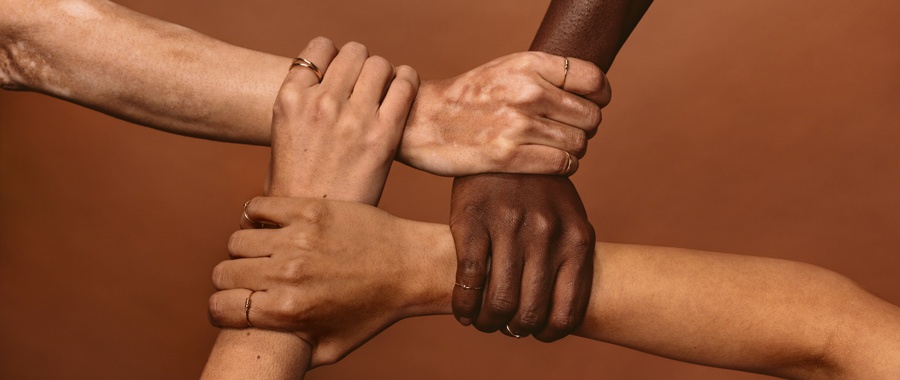The Bahá’í teachings emphasize the significance of community building as a fundamental aspect of progressing toward racial healing and harmony. In a world often marred by division, prejudice, and strife, these teachings stand out as a beacon of hope, elucidating a path towards inclusivity, understanding, and collective empowerment. This article seeks to explore the pivotal role of community in fostering racial unity, delving into foundational principles of the Bahá’í Faith, examining the transformative power of diversity, and proposing actionable strategies for cultivating harmonious relationships among different racial and ethnic groups.
At the heart of Bahá’í teachings lies the conviction that humanity constitutes a single, interconnected entity. This worldview transcends mere platitudes of equality, positioning race as a critical consideration in societal development. Central to this philosophy is the tenet of oneness of humanity, which posits that distinctions based on race, ethnicity, or nationality are meritorious only when recognized as a celebration of the manifold expressions of the same human spirit. Endorsing this perspective inherently calls upon individuals and communities to engage in dialogues that illuminate the intricate tapestry of racial experiences and histories, facilitating a collective understanding that transcends superficial interactions.
In recognizing that racial disparities stem from systemic inequities, the teachings of the Bahá’í Faith advocate for an active stance against prejudice and discrimination. This requires community members to not only dismantle personal biases but to also confront institutional injustices that perpetuate racial divides. Engaging in community building activities that promote understanding and collaboration is essential. Such initiatives may include workshops on diversity, interfaith dialogues, and collaborative service projects that bring individuals from varied backgrounds together, fostering a culture of solidarity and respect.
Diversity is not merely an aesthetic attribute; it embodies a vast reservoir of perspectives and experiences crucial for solving complex societal problems. The Bahá’í writings extol the value of diversity as integral to both individual and collective growth. As communities fortify their commitment to inclusivity, they inadvertently cultivate an environment ripe for innovation and progress. When individuals from different racial backgrounds collaborate, they share insights that enrich decision-making processes, leading to more effective and holistic solutions. Embracing diversity, therefore, is indispensable in the pursuit of racial healing and harmony, as it aligns with the broader Bahá’í principle of unity in diversity.
Moreover, community building in the context of racial harmony extends beyond mere interactions; it fosters relationships grounded in empathy and compassion. The nurturing of compassionate relationships is essential for creating spaces where individuals feel understood and valued. The Bahá’í teachings advocate for the cultivation of a profound sense of empathy, which serves to bridge the gap between diverse racial experiences. This can be operationalized through storytelling initiatives wherein members of different racial and ethnic backgrounds share their lived experiences. By listening to and learning from one another, communities can begin to appreciate the layers of complexity that shape one’s identity, thus engendering trust and respect.
Furthermore, community building initiatives should not be limited to adults. Educating the younger generations about the importance of racial harmony and cooperation is imperative for planting the seeds of understanding in the hearts and minds of future leaders. Children and youth are often more adaptable than adults and can be powerful agents of change. Programs designed to engage young individuals in discussions about race and diversity, such as collaborative art projects or youth-led community service, can empower them to embody and propagate the values of compassion, respect, and understanding.
The Bahá’í Faith also places significant emphasis on the role of consultative processes as a means to establish harmony within communities. Consultative dialogue, characterized by humility and an openness to differing opinions, fosters a culture of collaboration that is essential for conflict resolution. By creating environments in which all voices are heard and valued, communities may approach racial issues not merely through confrontation, but through collective exploration and synthesis of ideas. This method embodies the principle of unity and encourages participants to transcend personal biases in pursuit of a greater communal good.
In the pursuit of racial healing and harmony, the structured development of community involves establishing frameworks that support and sustain these efforts over time. This may include forming local councils or groups dedicated to addressing racial dynamics within the community. Such entities serve as forums for ongoing dialogue, reflection, and action, ensuring that the commitment to racial harmony remains a central focus. By cultivating a strong community infrastructure, the momentum towards healing and understanding can be sustained, with diverse stakeholders continuously participating in this vital endeavor.
In conclusion, the Bahá’í teachings advocate for an approach to community building that consciously integrates the principles of equality, diversity, and empathy. By recognizing the interconnectedness of humanity, communities are encouraged to actively engage in practices that promote racial healing and harmony. Emphasizing dialogue, collaborative efforts, and youth engagement, the framework established by the Bahá’í Faith offers tangible pathways toward overcoming the challenges posed by racial strife. As communities aspire to embody these teachings, they not only contribute to their local milieu but also resonate with the global call for justice and unity in an ever-evolving world.
